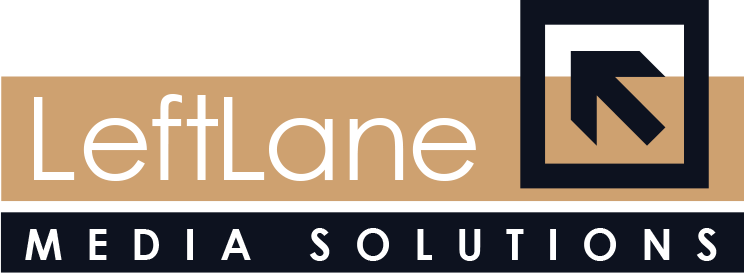The web development industry is always changing, with new technologies and languages coming out regularly. For web developers, this means they need to stay updated with all the web development languages.
According to recent 2024 surveys, JavaScript continues to dominate as the most commonly used programming language, with over 65% of developers using it. HTML/CSS has seen a rise in popularity and is the second most-loved language by developers.
In this article, we will provide an overview of the 20 popular web development languages for modern web development projects.

What Are Web Development Languages?
Web development languages are the coding languages developers use to create and manage websites and web applications.
These languages range from Hypertext Markup Language (HTML) to high-level systems programming languages like Python and Java.
Front-end vs Back-end Web Development Languages
Front-end web development languages are used for designing and building the user interface of web pages. Examples include HTML, Cascading Style Sheets (CSS), and JavaScript.
Back-end web development languages, on the other hand, manage the server-side logic and database interactions of web applications. Examples include Python, Java, PHP, and Node.js.
Front-end Web Development Languages
Let’s take a closer look at the front-end web development languages:
1. HTML
HTML, or Hypertext Markup Language, is the standard markup language used for creating web pages. As a foundation of web development, HTML provides the basic structure and layout of a web page. It defines elements such as headings, paragraphs, links, images, and other multimedia content.
HTML is known for its simplicity and wide adoption. This is why it’s so accessible to beginners who want to learn a programming language.
That said, HTML is still powerful enough to be favored by professional web developers. Plus, it is universally compatible with all web browsers.
When properly structured, HTML is capable of improving a website’s SEO and accessibility. Meanwhile, the final HTML version, HTML5, introduces new elements for multimedia and mobile web development.
Furthermore, HTML can integrate with CSS and JavaScript. They make up the fundamental trio of front-end development.
2. Cascading Style Sheets
Cascading Style Sheets, or CSS, is a crucial web development language used to style web pages. It allows developers to control the visual presentation of a site.
While HTML provides the structure of a web page, CSS is responsible for the look and feel. It allows web developers to specify colors, fonts, layouts, and overall design aesthetics. This separates content from design to make the code more flexible and maintainable.
When combined with HTML, this style sheet language can enhance web page appearance. It is especially useful for creating responsive designs and dynamic styling.
It also enables animations and transitions. The result is an improved user experience without relying heavily on JavaScript.
Tools like SASS and LESS can extend CSS with features like variables and mixins.
3. JavaScript
JavaScript is a versatile scripting language that brings dynamic content and interactivity to web pages. It’s one of the essential programming languages for front-end web development.
JavaScript’s ecosystem includes frameworks and libraries like React, Angular, and Vue.js. With these, developers can produce complex web applications and enhance front-end development.
If you choose to master it, you’ll be able to build responsive, interactive, and user-friendly web pages.
4. TypeScript
Developed by Microsoft, TypeScript is simply JavaScript with additional static types. This programming language can help developers identify errors and improve code quality. It is especially useful for large-scale web applications.
TypeScript provides features such as type annotations and interfaces. It compiles down to plain JavaScript, which makes it compatible with existing JavaScript code and libraries.
The use of TypeScript leads to more maintainable and scalable code. It can improve productivity and reduce bugs in development.
5. Angular
Angular is a front-end web framework developed by Google. It features two-way data binding, dependency injection, and a powerful template system. These tools allow developers to build dynamic single-page applications.
Angular uses TypeScript as its primary language. It offers static typing and other features beneficial for large-scale applications.
Its robust framework includes tools for testing, development, and performance optimization.
6. React
React was developed by Facebook. It’s a popular JavaScript library used for building interfaces, especially single-page applications. You can use it to easily create reusable UI components and manage the state of complex applications.
React’s virtual DOM improves performance by minimizing direct manipulation of the actual DOM. Its component-based architecture promotes maintainability and reusability, making it easier to manage large applications.
React also integrates well with other libraries and frameworks.
7. Vue.js
If you want to build user interfaces and single-page applications, Vue.js is the ideal programming language to learn.
Created by Evan You, it is known for its simplicity and flexibility. Vue.js can be easily integrated into projects and scaled between a library and a full-featured framework depending on the project’s needs.
It provides reactive data binding and a component-based architecture similar to React. Vue.js also offers excellent documentation and a supportive community. This makes it accessible for developers of all skill levels.
8. SASS (Syntactically Awesome Style Sheets)
This is a CSS preprocessor. It extends CSS with features like variables, nested rules, and mixins. It makes writing and maintaining CSS easier and more efficient.
SASS compiles into regular CSS, which can then be used in web projects.
It allows developers to use logic in their style sheets, such as conditionals and loops. SASS helps in creating well-organized and maintainable style sheets.
9. LESS
LESS is another CSS preprocessor similar to SASS. It provides features like variables, nesting, and functions, which help in writing more manageable and reusable CSS. LESS can be compiled on the server side or client side.
It allows for more straightforward CSS writing by extending its capabilities with additional features.
With LESS, developers can maintain clean and organized style sheets. They can find it easier to manage large projects and collaborate with other developers.
10. Bootstrap
If you want to create responsive and mobile-first web projects, Bootstrap is another programming language you can learn.
Developed by Twitter, it includes HTML, CSS, and JavaScript components. It also provides pre-designed components and a grid system.
Bootstrap gives you access to different components, such as buttons, forms, and navigation bars. This lets you create modern-looking websites that are responsive across different browsers and devices.

Back-end Web Development Languages
Now let’s explore the most popular back-end web development languages:
1. JavaScript (Node.js)
Node.js enables JavaScript for server-side scripting and web servers, so developers can use the same language for both front-end and back-end development.
This full-stack approach simplifies the development process.
It’s the reason why this programming language is popular for building scalable web applications and real-time network applications.
2. Python
Python is used for data analysis, machine learning, scientific computing, dynamic typing, and web development. Django and Flask are the web development frameworks of Python, which are popular for building robust web applications.
Python’s easy syntax and gentle learning curve make it a favorite among developers.
Both beginners and experienced developers can use it since it’s known for its readability and efficiency. Scientific computing, data science, database query language handling, and back-end development are just a few applications of this language.
3. PHP
PHP is a scripting language developers use for web applications and dynamic websites. It is popular for its strength in server-side scripting and integration with HTML and CSS.
It is also an open-source programming language. This means it’s accessible and cost-effective.
Plus, PHP is flexible and easy to use. It allows developers to handle cross-site scripting and create dynamic web pages.
4. Ruby (Ruby on Rails)
Ruby is renowned for its clean syntax and rapid development capabilities. The Ruby on Rails framework uses Ruby’s strengths for functional programming. This makes it a powerful tool for building web applications.
Ruby’s simplicity and efficiency are popular among web developers who seek quick and effective solutions.
It is also used in scripting languages for web development. That’s because it provides a robust environment for creating dynamic websites.
5. SQL
SQL is the standard language for managing relational databases and performing data queries. It is crucial for backend data handling and analysis in web development.
SQL’s ability to manage and retrieve data efficiently makes it an indispensable tool for web developers.
It is also used in conjunction with other programming languages to handle data science and data analysis tasks.
6. C# (.NET Framework)
C# is a versatile programming language used within the .NET Framework for web services, game development, and systems programming.
Its features make it ideal for enterprise-level applications and network programming.
C# supports object-oriented programming languages and is capable of rapid web development.
7. Go (Golang)
Go, or Golang is a compiled language known for its high concurrency and performance. It is increasingly used for web servers and backend development due to its efficiency and speed.
Go’s modern features make it stand out among other web languages. Developers like it for its use in concurrent programming.
8. Rust
Rust focuses on memory safety and performance. It’s one of the most recent languages gaining popularity for its ability to build secure and high-performance applications.
This open-source programming language has growing support in the development community.
9. Swift
Swift is primarily used for mobile app development for iOS but has capabilities for integration with web technologies.
Its numerous features and user-friendly syntax help developers transition between mobile and web development.
10. Kotlin
Kotlin is the preferred language for backend and mobile app development for Android. Known for its modern features and ease of use, its adoption in the development community is increasing.
As a high-level programming language, Kotlin also improves productivity and code safety. Its support for functional programming and growing popularity make it a strong contender among other new programming languages.
How to Choose Which Web Development Languages to Learn
Choosing which web development languages to learn can be overwhelming, especially with the variety of languages available.
Here are some factors to consider when making a decision:
Understand Your Goals
First, determine what you want to achieve in web development.
Are you interested in front-end, back-end, or full-stack development? Or do you want to work on personal projects, freelance, or get a job in a specific industry?
Your goals will guide you in selecting the most relevant languages.
Consider Job Market Demand
Research the job market to see which languages are in high demand. You can use websites like LinkedIn, Indeed, and Glassdoor to find insights into the most needed skills in web development.
Currently, employers highly value languages like JavaScript, Python, and Java.
Evaluate Learning Curve
Some languages are easier to learn than others. If you are a beginner, starting with a language that has a gentle learning curve, such as HTML, CSS, or Python, can be beneficial.
These languages also have extensive documentation and community support. Beginners can easily ask for help when needed.
Look at Versatility
Choosing versatile languages can open more opportunities.
For example, JavaScript can be used for both front-end (with frameworks like React) and back-end (with Node.js) development.
Python is another language suitable for web development, data analysis, and machine learning.
Check Community and Resources
A strong community and plenty of learning resources can make a significant difference in your learning experience.
Languages with active communities, like JavaScript and Python, offer extensive tutorials, forums, and libraries that can help you overcome challenges and continue learning.
Project Requirements
Consider the types of projects you want to work on.
If you’re interested in building dynamic websites, JavaScript is essential. For data-driven applications, Python might be more suitable.
For enterprise-level applications, Java or C# could be the right choice.
Future Trends
Stay updated with industry trends.
Newer languages like Rust and Go are gaining popularity for their performance and safety features.
Learning such programming languages can future-proof your skills and keep you ahead in the industry.
Compatibility and Ecosystem
Some languages work better together. For example, HTML, CSS, and JavaScript are commonly used together for front-end development.
Once you understand how languages complement each other, you can build a more cohesive skill set.
Personal Interest
Lastly, consider your interests. Learning a language you’re passionate about can make the process more enjoyable and rewarding.
If you enjoy working with visual elements, front-end programming languages like HTML, CSS, and JavaScript might be more appealing.
But if you prefer solving complex problems, back-end languages like Python, Java, or PHP could be a better fit.
Web Development With LeftLane Media
If you have a project and want to get started with LeftLane Media, fill out their quote form.
You can also contact them by dialing 714-676-9253 or visiting their office located at 3040 Saturn St #205, Brea, CA 92821.
FAQs About Web Development Languages
What is the best web development language to learn first?
One of the most popular programming languages to start with is HTML, as it forms the foundation of web development. After mastering HTML, CSS and JavaScript are essential for front-end development. For back-end development, Python is a good choice due to its readability and versatility.
Why is JavaScript considered a top web development language?
JavaScript is considered one of the best web development languages because it allows web developers to create interactive and dynamic web pages. It is used both on the client side and server side (with Node.js), so it’s a versatile choice for full-stack development.
How does learning an object-oriented programming language benefit web developers?
Learning an object-oriented programming language like Java or C# can benefit a web developer by improving their ability to structure code efficiently. It helps in managing complex web applications by using objects and classes.
What makes a web development language popular among web developers?
A web development language can become popular among web developers due to its ease of use, community support, versatility, and performance. Languages like Python and JavaScript are popular because they have extensive libraries and frameworks and are suitable for various web development tasks.
How do I choose the right web development language for my project?
Choosing the right web development language depends on the project requirements. For front-end development, HTML, CSS, and JavaScript are essential. For back-end development, consider the project’s needs: Python for simplicity, PHP for dynamic websites, or Java for enterprise applications.
